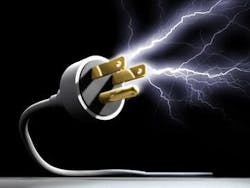Navy surveys industry for high-power energy storage called hybrid energy storage module (HESM)
ARLINGTON, Va., 5 Sept. 2012. U.S. Navy researchers are reaching out to industry to find companies able to build prototype high-power energy storage technology called hybrid energy storage module (HESM), which experts say has the potential to enhance fuel efficiency for future high-power weapons and sensor systems on existing and future vehicles, aircraft, ships, and submarines.
The Office of Naval Research (ONR) in Arlington, Va., issued a request for information last week (12-RFI-0009) to help researchers better understanding HESM operation in a military environment, and how to evaluate future demonstrations of this technology.
HESM technology involves energy storage with high energy density, variable charge and discharge rates, and in modular-reconfigurable packages for future military power microgrids and vehicles.
Navy researchers particularly are interested in HESM technology as it might apply to aircraft and large power systems.
Scientists say they believe HESM technology on aircraft has the potential to buffer high transient conditions normally mitigated with the platform generator where electric actuators are concerned. On large power systems, HESM could improve performance and efficiency of systems with continuous weapons and sensor pulsed loads or high transients.
Navy researchers want information from companies concerning:
-- high power and energy based energy storage subsystems at 1 kilovolt DC, including high-rate capable batteries, capacitors, flywheels, and superconducting magnetic energy storage (SMES);
-- energy storage design approaches supporting safety, non-propagation, and thermal management without affecting packing density;
-- energy storage approaches supporting high rates of charge and discharge, including load buffering and generator load leveling under highly transient operations;
-- energy storage capable of high slew rates and extremely rapid response under instantaneous step and drop load conditions;
-- intermediate storage systems to support directed-energy weapons and high-power sensors;
-- energy storage interfaces to connect 1 kilovolt DC to electrical architectures including 450 volts AC, 4,160 volts AC, and 6 kilovolts DC;
-- high power density, high slew rate, and lightweight interface and fault isolation methodologies to connect energy storage to electrical architectures including 270 volts DC, and 200 volts AC L-L (400 Hz, 3 phase);
-- energy storage fault current limiting protection that is autonomously resettable to 270 volts DC;
-- autonomous operation, load planning and dynamic re-planning, command and control, and multi-device coordinated operations and controls for energy storage systems;
-- approaches that support commonality and reduced cost with compatible footprint and density to state of the art storage devices; and
-- existing or planned industry standards and specifications for use with construction, installation, or operation of energy storage systems.
Companies interested in responding should send white papers no later than 21 Sept. 2012 to ONR's Donald Hoffman by e-mail at [email protected], or by post care of the Office of Naval Research Code: ONR 331, Room 271, 875 North Randolph St., Arlington, Va. 22203-1995.
For questions or concerns contact Hoffman by phone at 703-696-0614, or by e-mail at [email protected].
More information is online at https://www.fbo.gov/spg/DON/ONR/ONR/12-RFI-0009/listing.html.
Follow Military & Aerospace Electronics and Avionics Intelligence news updates on Twitter

